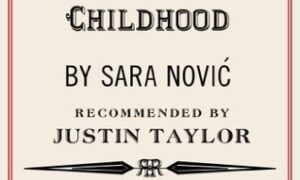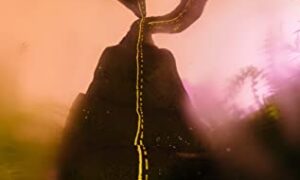 La beauté sans vertu by Genevieve Valentine
La beauté sans vertu by Genevieve Valentine
My rating: 3/5 cats



There should always be more to look at than anyone can catch, that sense of being doomed to miss something wonderful; that’s how a presentation becomes a show.
i had really high hopes for this one. when its summary promised a vicious little swipe at the fashion industry, and it opens with this intriguing passage about how models in this story’s world are surgically altered to make them more appealing, i figured i was in for a dark journey about unrealistic standards of beauty and the lengths people will go to achieve perfection:
These days they use arms from corpses—age fourteen, oldest, at time of death. The couture houses pay for them, of course (the days of grave-robbing are over, this is a business), but anything over fourteen isn’t worth having. At fourteen, the bones have most of the length you need for a model, with a child’s slender ulna, the knob of the wrist still standing out enough to cast a shadow.
The graft scars are just at the shoulder, like a doll’s arm. The surgeons are artists, and the seams are no wider than a silk thread. The procedure’s nearly perfect by now, and the commitment of the doctors is respected. Models’ fingertips always go a little black, tending to the purple; no one points it out.
and while the story does certain things really well, i think as a piece it’s unsuccessful—it doesn’t make its point clearly enough. it goes back to what i was saying about The Girl Who Sang Rose Madder—that is a story. this one is more like a trinket—it’s a craft project where a bunch of things are collaged but nothing’s really lying flat.
because there are a number of storylines here: there’s the story of the fashion show; covering the treatment of the models, the protesters, the preparation, and the vision of the enigmatic coordinator rhea, but then there’s also the fairy tale of The Princess of Roses and Diamonds (which i think is actually perrault‘s Diamonds and Toads) that keeps popping up throughout the story.
the fashion parts are excellent—she really captures the silliness and oddness of the fashion industry and its emphasis upon spectacle
The idea is the ringing of a bell, which starts with a single tone being struck and builds in its echoes until every strike becomes a symphony. One girl will walk out first, then two closer behind one another, then four. It should build until every outfit can be seen perfectly and in full only at the first turn. The reveal is precious and fleeting, and isn’t meant to last.
and the self-important gushing of the fashion press
“This collection is going to be such an amazing statement about the cultural position of the industry.”
and the darker, uglier side of the business, where the cruelty of silk production is juxtaposed against the treatment of the models.
Eventually the choreographer gives up on trying to explain the vision to a bunch of girls who can’t even walk on the right beat, and he resorts to a cap gun, fired twice at each model as she passes the first turn to give her the metronome ticks of her stride. The shape of things visibly improves, but they spend another hour after that on quiet faces, because for a bunch of girls who claim they’re professional, they flinch like you wouldn’t believe.
but she also romanticizes some of the process—making a model into a star by fabricating mystique, a tragic and triumphant backstory worthy of an olympic athlete for the press to lap up, and despite the surgical procedures, the girls are treated as well as any thoroughbred:
But it’s a precision business. The models don’t even suffer phantom aches from their old arms. The doctors clean up anything else that’s wrong while they’re in there, as a special service—faltering thyroids and kidney troubles and moles that are suspicious or unsightly. These girls are an investment; they’re meant to live.
the silliness of the protesters is also done well—outrage for the sake of outrage without clear and consistent goals and so easily caving to the very spectacle they rail against.
the problem is this fairytale component; what it’s meant to signify and what rhea’s role in all of this is. because the tale is presented as a sort of subversion of expectations—the “good” girl who seems to have been granted a wonderful reward for her kindness is actually suffering for it, while there’s a freedom to being the unkind girl, left alone in the woods, unbloodied and powerful.
i just don’t get how that story applies to the fashion parts, and what rhea’s vision actually was. because it seems that she was trying to make a more personal statement underneath the obvious one about impermanence she was broadcasting, but it’s unclear to me whether the end of the fashion show was planned by her or not. she’s built as an ambiguous character—is she benevolent or self-serving, and what does her nod to the fairy tale mean here?
i just wish it had been tighter and clearer. it’s a bunch of pretty parts that don’t look great all sewn together.
oh, wait…
3.5

read it for yourself here:
http://www.tor.com/2016/04/27/la-beau…
read my book reviews on goodreads







